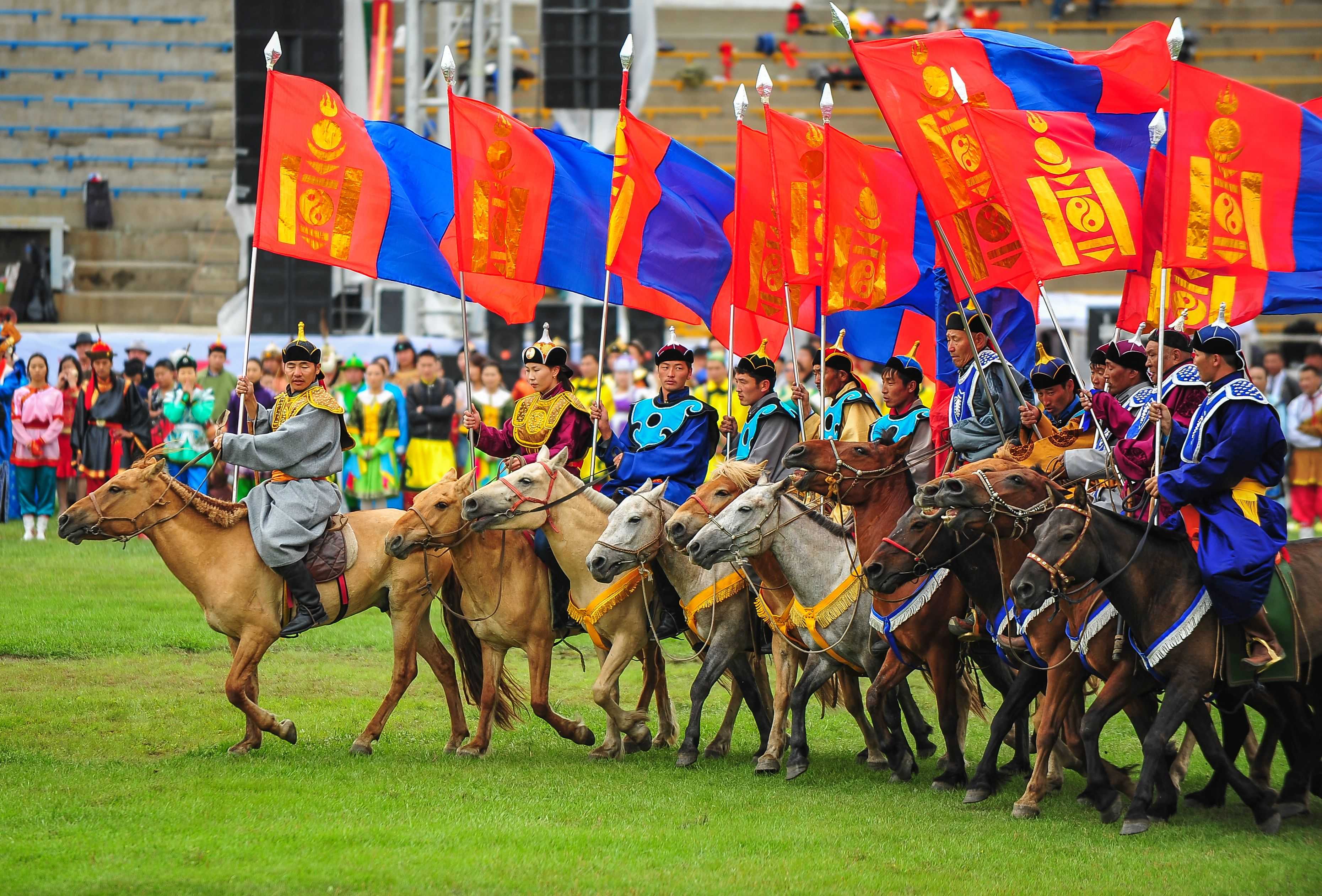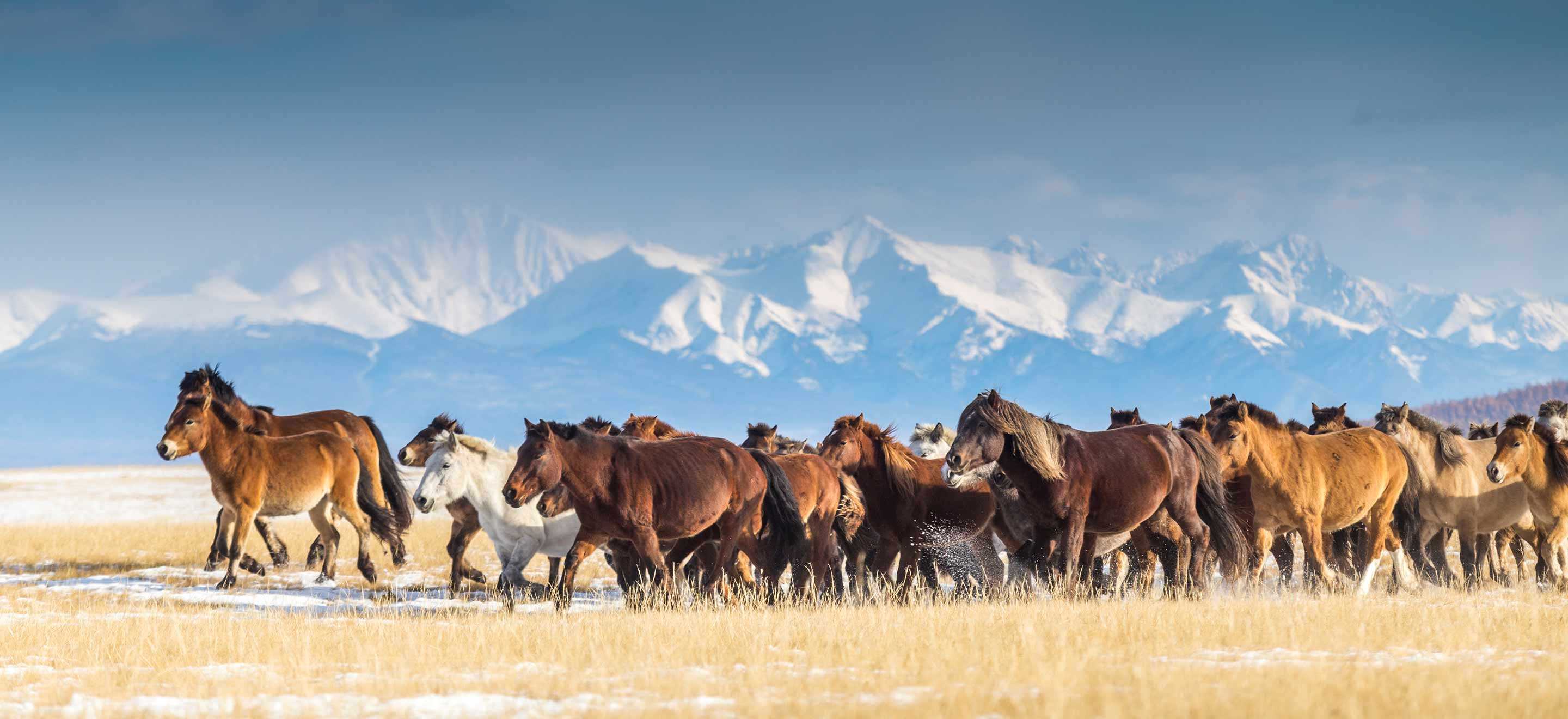
The Significance of the Mongolian Horse
The Significance of the Mongolian Horse
Few animals are as synonymous with a group of people as the horse is with the Mongolians. This prized animal has long been regarded not only as a means of traversing Mongolia's vast terrain but also for the many resources it provides. From their use in local delicacies to the companionship they offer, horses appear as a permanent thread throughout Mongolian culture.
Outside the capital city of Ulaanbaatar, horses still widely serve as transportation, with over three million of them inhabiting the Mongolian Steppe. Nomadic Mongolians living in this area rely on these horses for their livelihood. They are the perfect allies for nomads, as they are accustomed to the harsh winters and arid summers. And they also require little to survive, feasting only on grass and water.
Role in Combat
Because of their versatility, Mongolian horses were invaluable assets in Genghis Khan’s army during his conquests. Their ability to travel long distances through rough terrain with little sustenance made them the perfect vehicles for long expeditions. Furthermore, their flexibility and speed gave the Mongols the agility to grow their expanding empire.
The milk of these equines provided nutritional and recreational benefits when fermented into a local alcoholic drink, airag. The mare's milk also held spiritual significance. Before expeditions, it was scattered to ensure the victory of an upcoming conquest.
In more recent years, Mongolian horses have continued to provide military assistance. During World War II, Mongolia provided more than 500,000 horses to the Soviet Union. "Reckless," a mare of Mongolian breeding, even served in the United States Marine Corps during the Korean War.
Although Reckless was initially employed to transport a six-foot-long recoilless rifle, her value was soon recognized by the American army. She played an integral role within her platoon and performed myriad tasks, from hauling heavy equipment and ammunition to transporting wounded soldiers away from the battlefield. Most notably, Reckless made 51 unaccompanied trips during the infamous Battle for Outpost Vegas in 1953, carrying nearly 9,000 pounds of ammunition and explosives through rough terrain to the front lines.
Reckless' service earned her the official ranking of sergeant. She also became a decorated war hero and was awarded two Purple Hearts and other honors by the United States military.
Recreation
Horses likewise play a massive role in the recreational lives of Mongolians. From racing to music, the horse is a large part of Mongolian entertainment. Eagle Hunters in the Steppe use horses as partners when hunting, and racers use them for sport. Horse races happen regularly, providing excitement at some of the largest national festivals, such as the Naadam Festival and Mongolian Lunar New Year, or Tsagaan Sar.
Additionally, locals use horsehair to create Mongolian horsehead fiddles, or morin khuur. This practice originated in Central Asia and changed the way we play instruments today, providing an alternative to traditional plucking.
Further proof of their societal worth, horses are also sometimes exchanged as gifts amongst dignitaries. In 2011, then United States Vice President Joe Biden was given a horse by the Mongolian government. And, Barron, the son of former United States President Donald Trump, was gifted a horse from Mongolian President Khaltmaagiin Battulga in 2019.
Food
Adding to its long list of uses, the horse is highly valued for the sustenance it provides through its meat and milk. The mare, or female horse, undergoes milking up to nine times a day in the summer.
Horse meat is central to Mongolian cuisine. It is often the filling in traditional dumplings, or buuz, and an ingredient in the popular stir-fried noodle dish tsuivan. Mongolians also enjoy horse meat in deep-fried dough pastries known as khuushuur.
Companionship
Most importantly, the horse acts as a companion to the Mongolian people. The horse population in Mongolia exceeds that of its human inhabitants, creating a unique coexistence between equines and Mongolians. This symbiotic relationship has existed for generations and is a significant part of Mongolia’s past, present, and future.
To experience this special relationship, consider traveling to Mongolia for Naadam to view horse racing or for the Eagle Festival to see hunters traveling on these majestic animals. Make sure to taste the local cuisine to fully appreciate the horse during your stay.
Contact us to book the Naadam and the Nomadic Life Tour or the Golden Eagle Festival 2023 Tour today!
...

